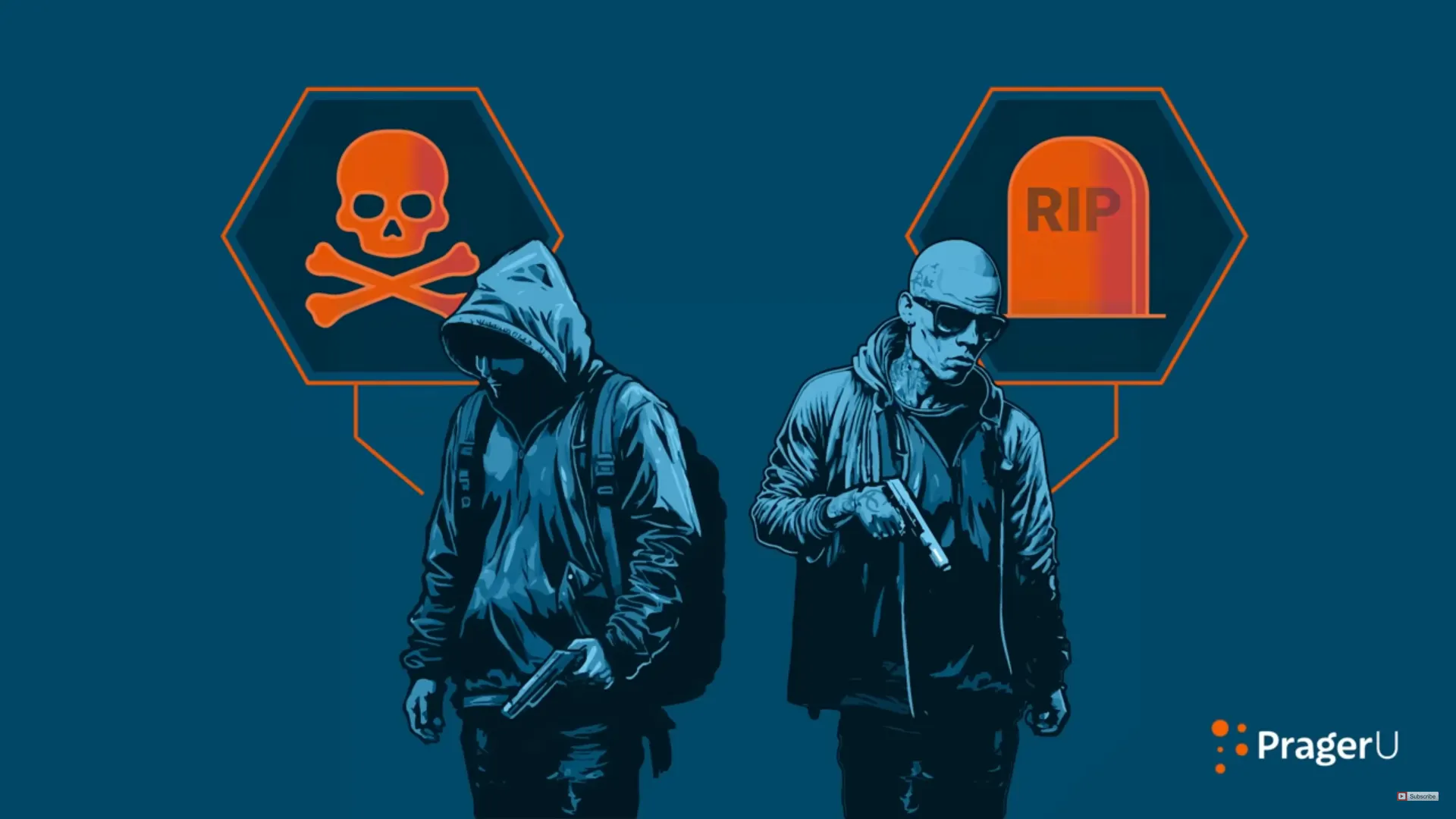Crime rates across the U.S. have steadily risen since the start of the 2020s, in stark contrast to the steady decline seen since the 1990s. Former federal prosecutor Tom Hogan sat down with PragerU to break down four policy changes that could rapidly reverse that trend.
- Target the “power few”
- Go after the drug dealers and gun toting felons
- Unite cops and prosecutors
- Keep the bad actors in jail
“None of these solutions are theoretical: they’re street tested and backed by rigorous studies,” Hogan said. “They’re constitutional, and cost effective. While each one will reduce crime on its own, taken together, they can transform a city, not in decades, but within a year or two.”
Hogan first notes that violence follows predictable patterns — it usually takes place in a handful of “crime hot spots,” disproportionately on nights and weekends and during the summer. Furthermore, a very small share of offenders commit the majority of violent crimes.
“In any given city, just 5% of criminals are responsible for 50% of all violent crimes,” Hogan said. “I want to make this abundantly clear: it’s not 5% of the total population of the city … it’s 5% of the criminals.”
By focusing on these “hot spots” and getting a relative handful of serial offenders off the streets, police can have an outsized impact on violent crime.
Similarly, drug dealers and felons with illegally acquired firearms are valuable targets — not only are they career criminals themselves, but they’re also intimately connected to criminal networks that smuggle illicit goods across the country and have witnessed far more crimes than they have perpetrated. When faced with harsh sentences, they will often flip and provide valuable information on other cases in exchange for leniency.
Hogan also stresses the need for police and prosecutors to collaborate throughout the process to avoid legal slip ups or sloppy presentation of evidence. Hogan bemoans the current state of affairs, where police departments and prosecutors are often at each other’s throats, arguing that poor cooperation only helps criminals.
📱 CLICK HERE TO GET THE DAILYWIRE+ APP
Finally, Hogan stresses the need for longer sentencing, citing two studies by the U.S. Sentencing Commission, which found that sentences in excess of five years were correlated with lower rates of recidivism.
While the intuitive understanding that the threat of longer sentences disincentivize crime is applicable, Hogan also cites the age-crime curve, a widely observed statistical phenomenon that shows that criminal aggression in males peaks in late adolescence.
“Most violent criminals commit the majority of their crimes from their late teens into their 20s,” Hogan noted.
This is the age range where testosterone levels are at their highest — testosterone is correlated with aggression and impulsive behavior. The prefrontal cortex, which handles complex reasoning and long term decision making, does not fully develop until around age 25, which, coincidentally, is when the likelihood that a given male will violently offend begins to drop precipitously.
“Prison sentences of over five years simply take these violent criminals out of circulation when they’re at their most dangerous.”
WATCH:

.png)
.png)

